Table of contents
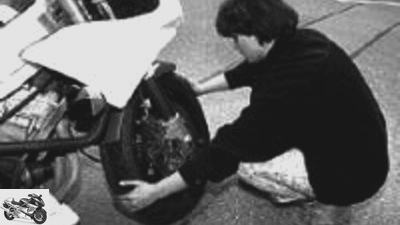
counselor
workshop
Change the wheel bearing
Change the wheel bearing on the motorcycle
With a mandrel, hot air and bearing grease
Changing wheel bearings on a motorcycle requires a little bit of screwdriving experience and one or the other special tool.
02/25/2003
What turns or moves is not built to last, it wears out more or less quickly. Wheel bearings inevitably rotate when the motorcycle moves, so they wear out, especially since the bearings are exposed to enormous forces during operation. You have to endure the weight of the motorcycle and also swallow bumps from bumps in the road. When braking, deceleration forces put a strain on the bearings, and the rear wheel also has to withstand the driving forces.
Another reason for defective bearings is water or dirt. For protection, the bearings are covered by integrated sealing rings, usually they are also protected by covers. Despite all precautionary measures, moisture can penetrate over time and destroy the lubricating film in the bearings. Excessive care can also be harmful: Careless steam jets can easily blow water through all the cracks into the bearings.
In many motorcycles, the bearings are only sealed on one side, so that moisture or dirt can penetrate the bearings from the rear along the axis. For this reason, the axle should always be well greased when assembling. Sometimes only cheaper ball bearings with Z-washers are used instead of the better and more expensive RS seals. In many cases, you can use inexpensive DIN bearings for subsequent purchases, but you should always choose ball bearings with 2 RS seals. Bearings that are sealed on both sides are greased from the factory; versions that are open on one or both sides must be used with plenty of bearing grease.
The wheel bearings should be checked for play and easy running during inspections or tire changes. When the wheel is removed, it is particularly easy to check whether the inner rings can be turned without resistance and noiselessly.
Wheel bearings can also be checked when they are installed. To do this, the wheels must be relieved. Jerking the wheel can be used to determine whether there is any play. Noise when the wheel is turning can indicate that bearings are defective. However, there are other causes for unhealthy noises or resistance when turning, for example in the brake system.
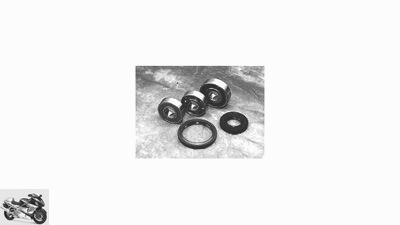
Bearings are usually completely exchanged as a set, even if only one bearing is defective. It is advisable to also replace any existing sealing rings. Instead of expensive original spare parts, cheap but no less good standard bearings can often be used. If possible, use bearings with rubber washers (2RS) on both sides.
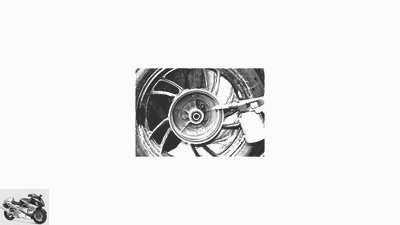
Wheel bearings are pressed into the hub. In order to damage the bearing seats as little as possible, they should be carefully heated to a maximum of 100 degrees Celsius. The aluminum in the hub expands more than the hub, the seat expands and the bearings are easier to remove.
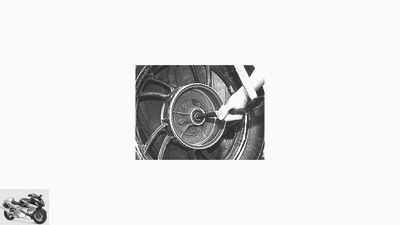
The wheel bearings are now driven out with a long mandrel and a hammer that is not too light. Place the mandrel all around the bearing with every blow so that the bearing does not tilt. Craftsmen and professionals use special extraction tools that are too expensive for the amateur.
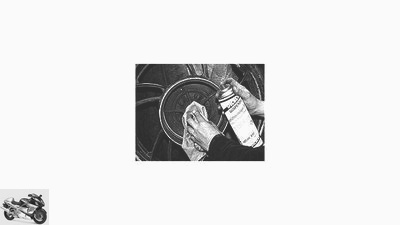
Before installing new bearings, the seat must be thoroughly cleaned of dirt or grease. Also clean the interior between the two bearing seats. Then check the seats for damage. For example, the seat in the area of the bearings may have widened or a ridge may have formed when it was driven out.
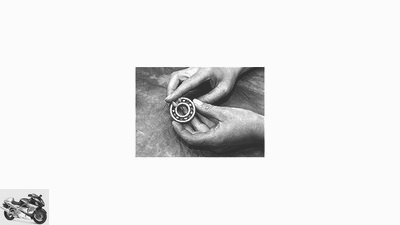
If the new wheel bearings are not sealed, they must be greased before installation. Use special bearing grease for this. When installing, make sure that the open sides are facing inwards or, in the case of double bearings, facing each other.

If the outer bearing shell is not tight enough, the bearing must be fitted with a special adhesive. Suitable adhesives are available from Loctite or Wurth, for example. If the bearing seat has already widened a little, a special repair adhesive must be used. In the heat of the moment, do not forget the spacer tube between the bearings when assembling.
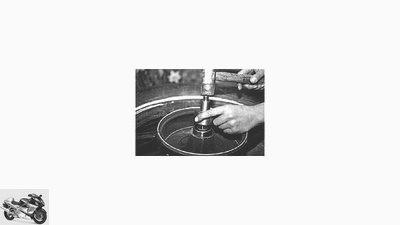
The bearing is cooled in the freezer compartment before being inserted, and the bearing seat is heated again. Then drive in the bearing with an aluminum mandrel that attaches to the outer ring. Never hit the inner ring with a hammer, this will ruin the balls or bearing rings. It is essential to ensure that it is applied straight.

You can also put the old bearing between the new one and the driving mandrel, this prevents damage. The muffled sound tells you when the new bearing has reached the stop on the seat. Check whether the spacer is correctly seated or whether it has jammed.
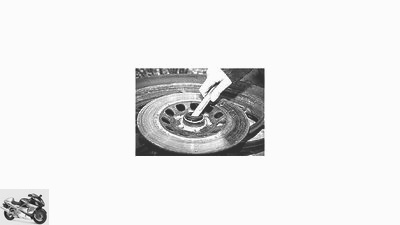
If there is a separate sealing ring in front of the bearing, it can either be driven out together with the old bearing or levered out with a lever or screwdriver. In the latter method, however, it is destroyed and must be replaced by a new one in any case.
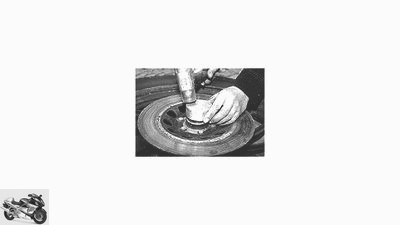
The new sealing ring must also be inserted very carefully so that it does not become deformed or the sealing lips are damaged. A mandrel or suitable round material is helpful here. Make sure that the open side of the sealing ring faces inwards.
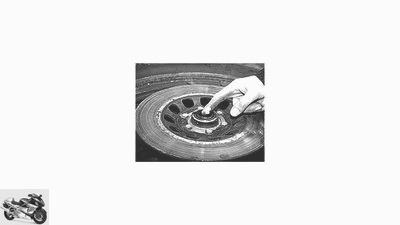
After installation, coat the sealing rings with a little grease, this also applies to the speedometer drives on the front wheel. Use grease sparingly, especially with drum brakes, otherwise the braking effect will suffer from excessive grease. Remove grease from braking surfaces and discs with brake cleaner or degreaser spray.
Related articles
-
Change the steering head bearing
counselor workshop Change the steering head bearing Change the steering head bearing Change the steering head bearing If the bearing in the steering head…
-
Adviser: change the wheel bearing
Schermer 7th pictures Schermer 1/7 Changing the wheel bearing Step 7: When driving in, carefully tap into the outer ring with a mandrel.. Schermer 2/7…
-
Adviser: change the steering head bearing
Schermer counselor workshop Adviser: change the steering head bearing Adviser: change the steering head bearing Check and replace steering head bearings…
-
Cook 10 pictures Cook 1/10 If you doubt your driving ability because every curve radius becomes a hexagon and the motorcycle no longer meets a line, a…
-
counselor workshop Change fork sealing rings Change fork sealing rings Change fork sealing rings Loss of oil on the telescopic fork is not just a…
-
Cook counselor workshop Adviser: Change Simmerrings Adviser: Change Simmerrings Change the oil seals on the telescopic fork If the fork oil finds its way…
-
Change brake discs yourself – tips and tricks
Markus Jahn 9 pictures Ralf Schneider 1/9 There is a need for action here! The heat spots on the panes shown on the left can certainly no longer be…
-
Indian Challenger Recall: Transmission Output Bearing Issues
Indian, Barry Hathaway 14th pictures Indian 1/14 Indian is launching a completely new series with the Challenger. Indian 2/14 The excavator-style model…
-
counselor workshop Change chain set Change chain set Replace the pinion, toothed wheel and drive chain Regular chain maintenance can delay the moment of…
-
counselor workshop Change chain kit Change chain kit Change chain kit Worn drive chains usually draw attention to themselves when driving with cracking…